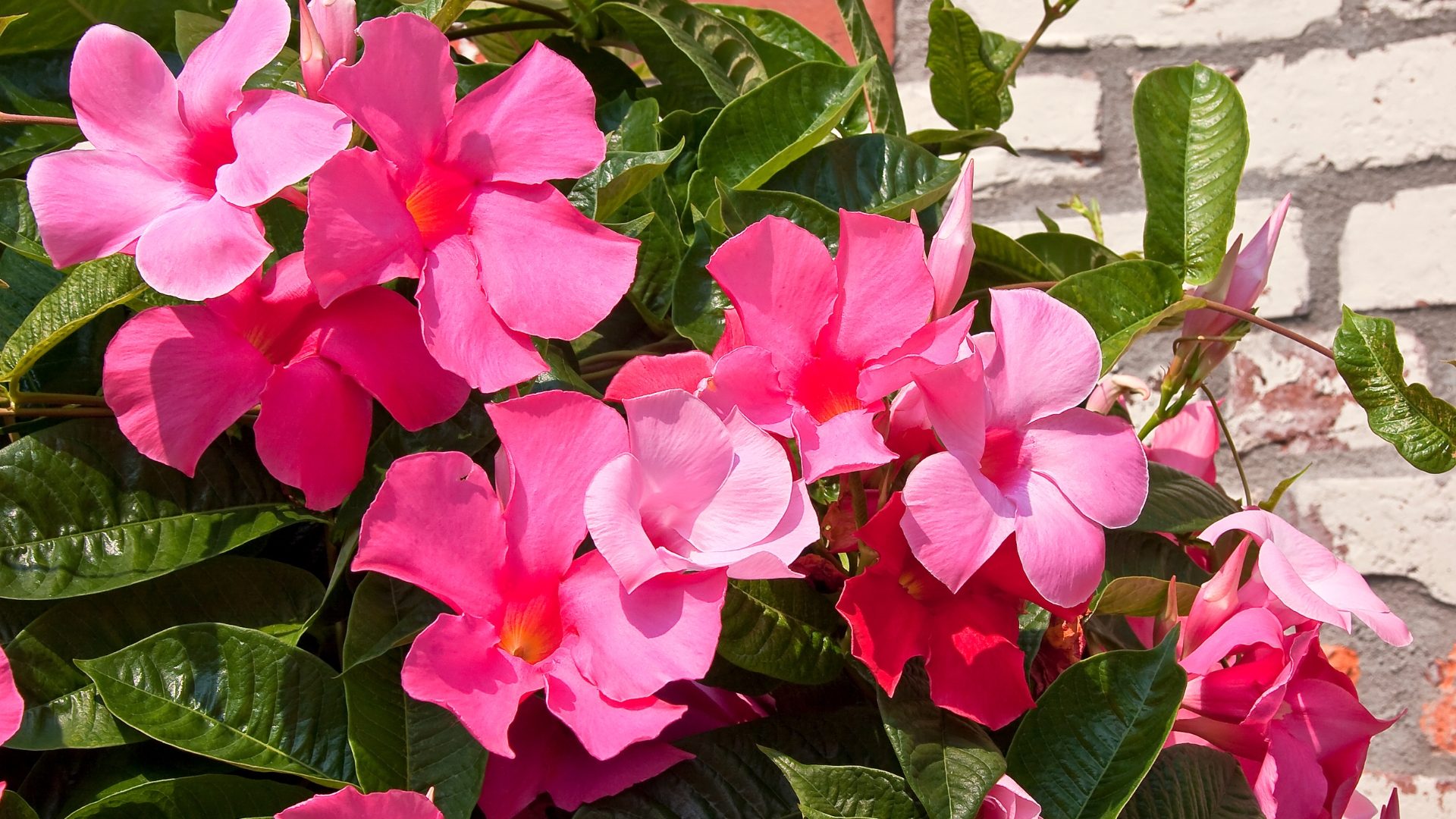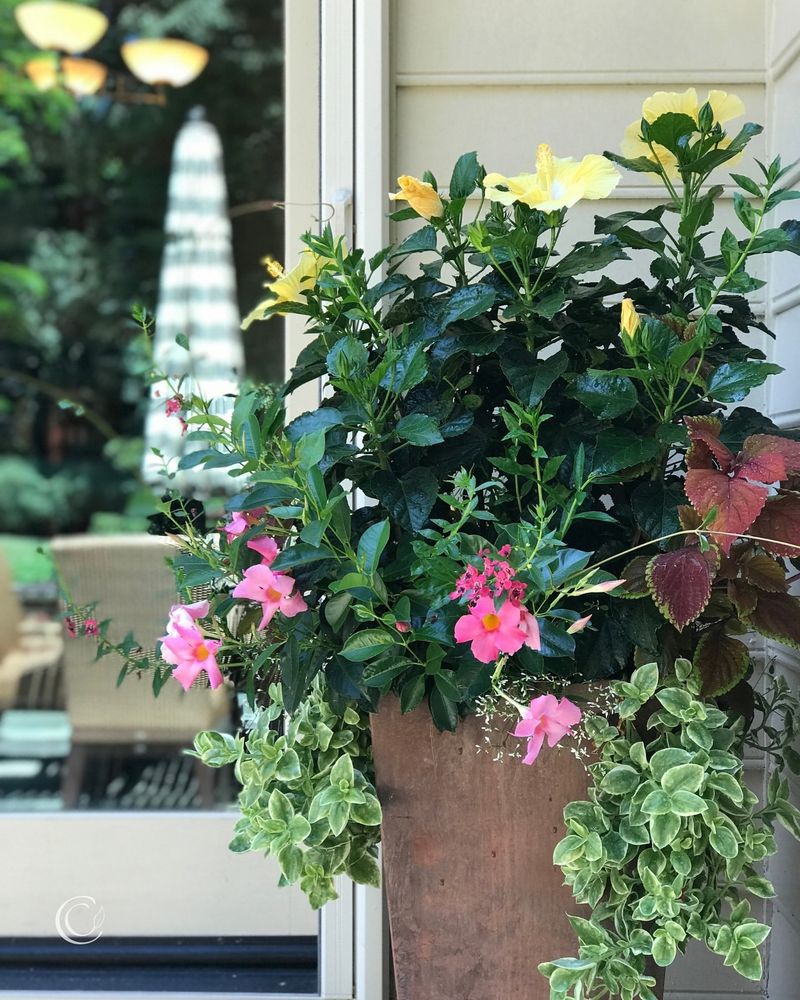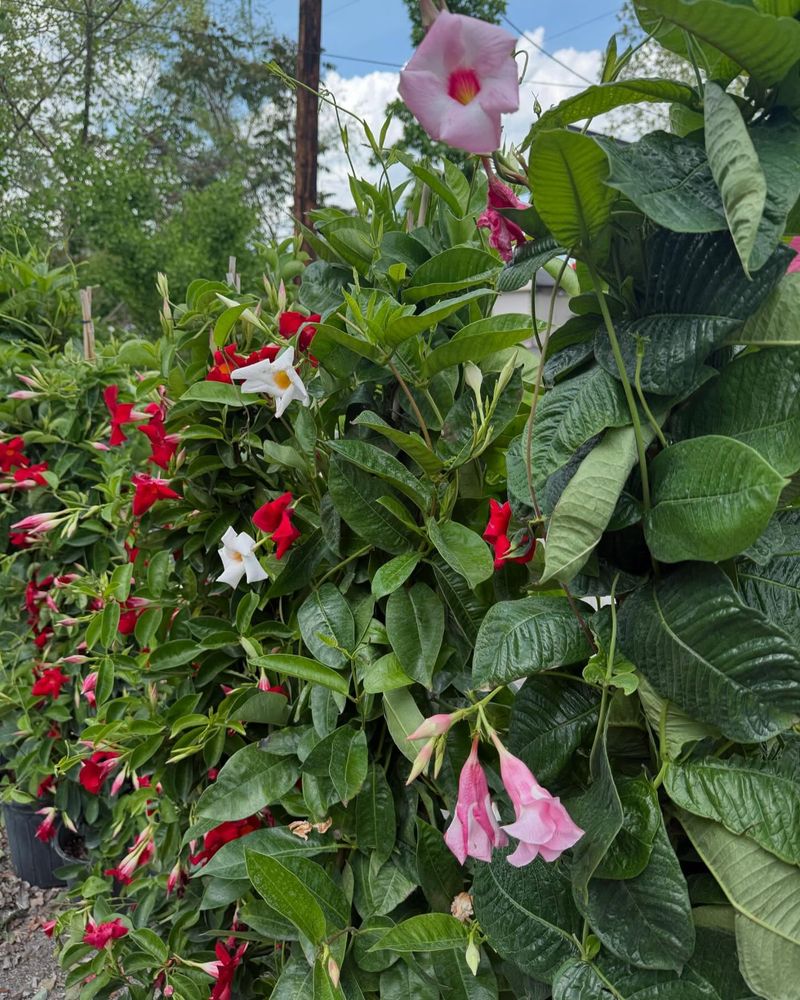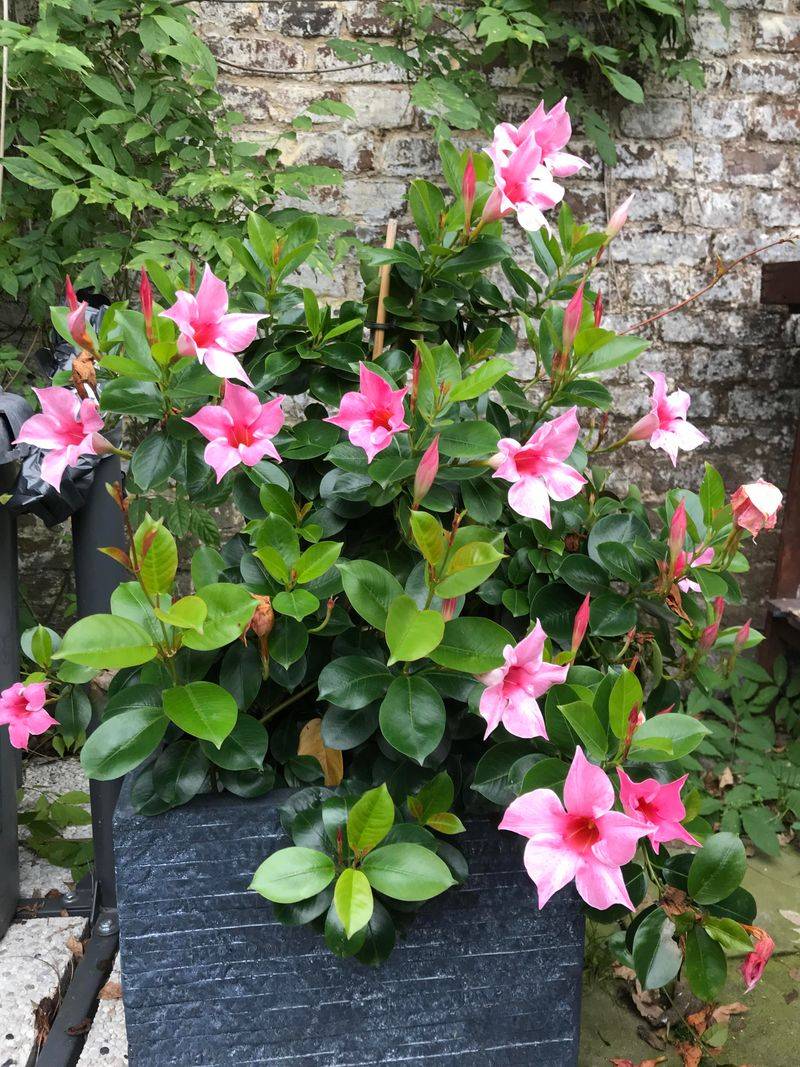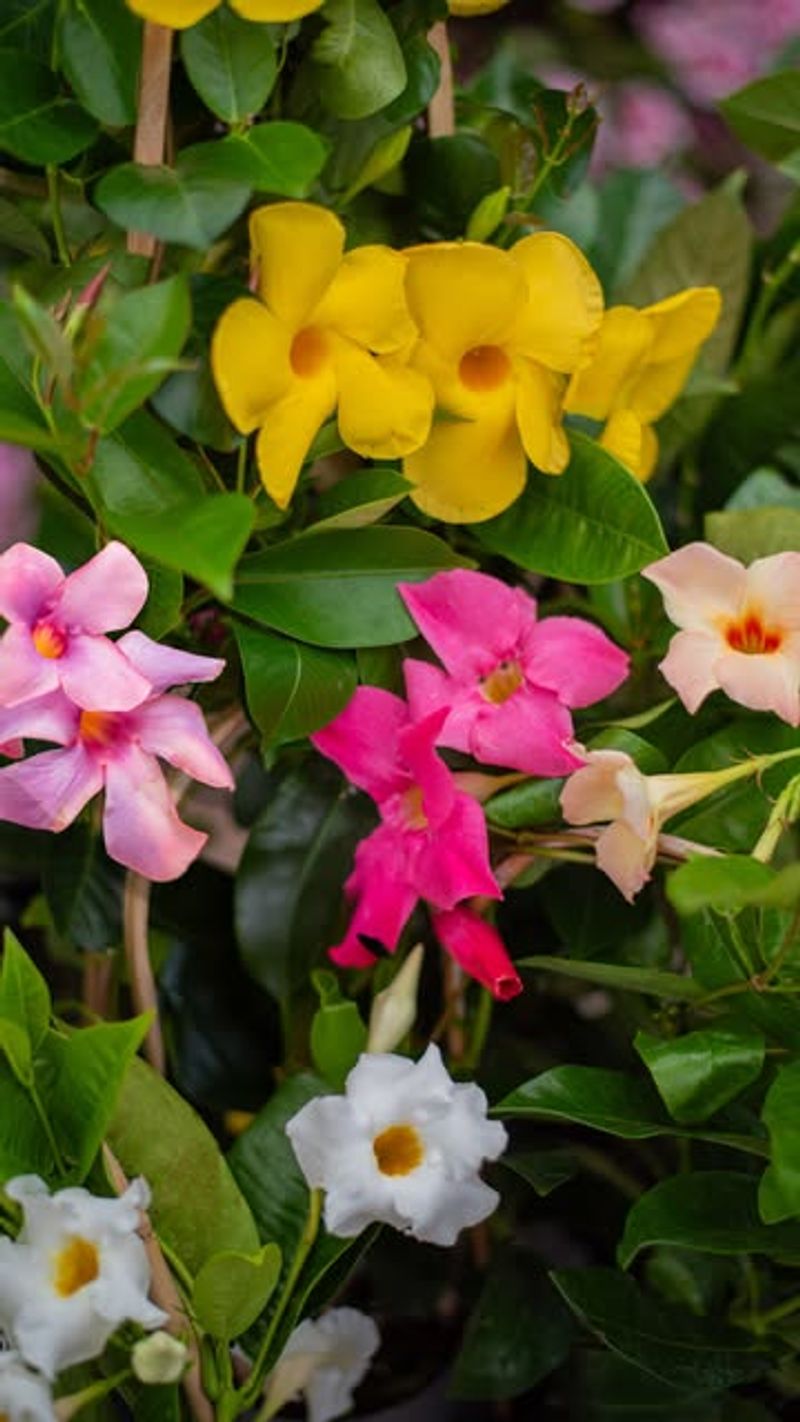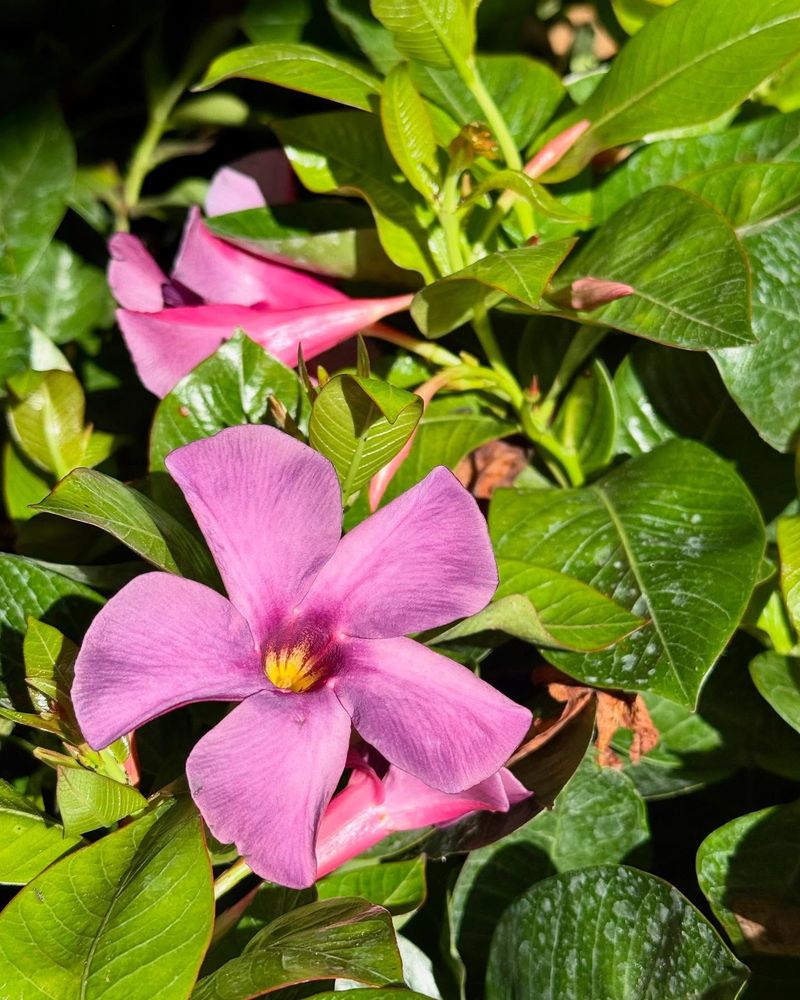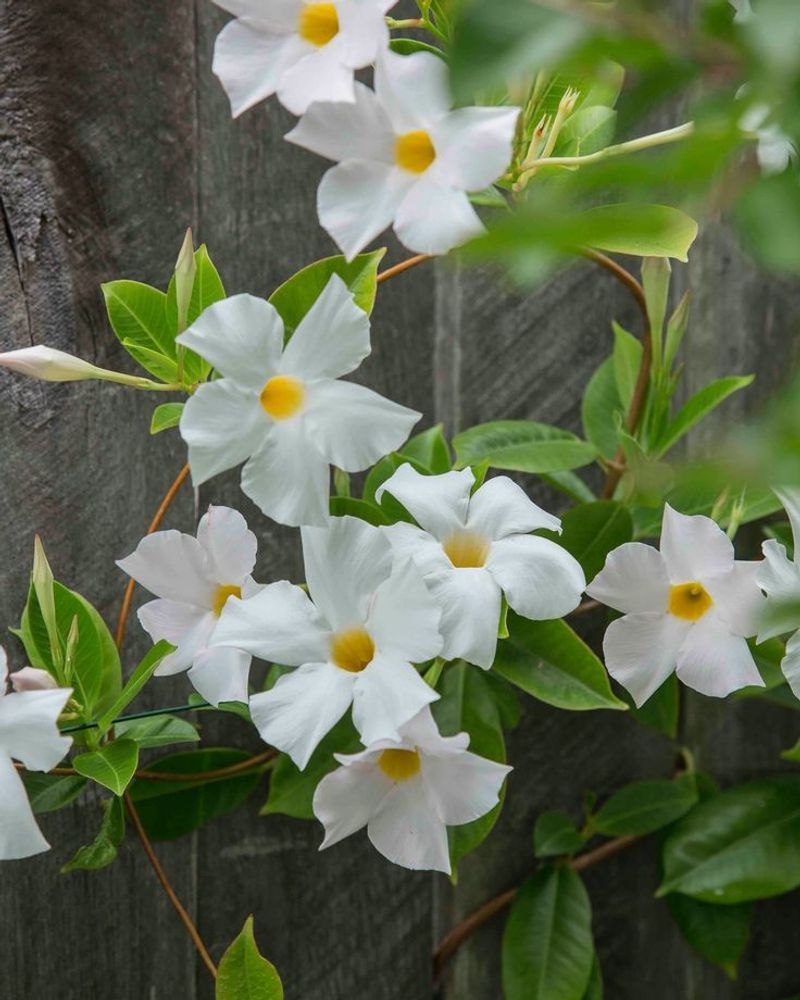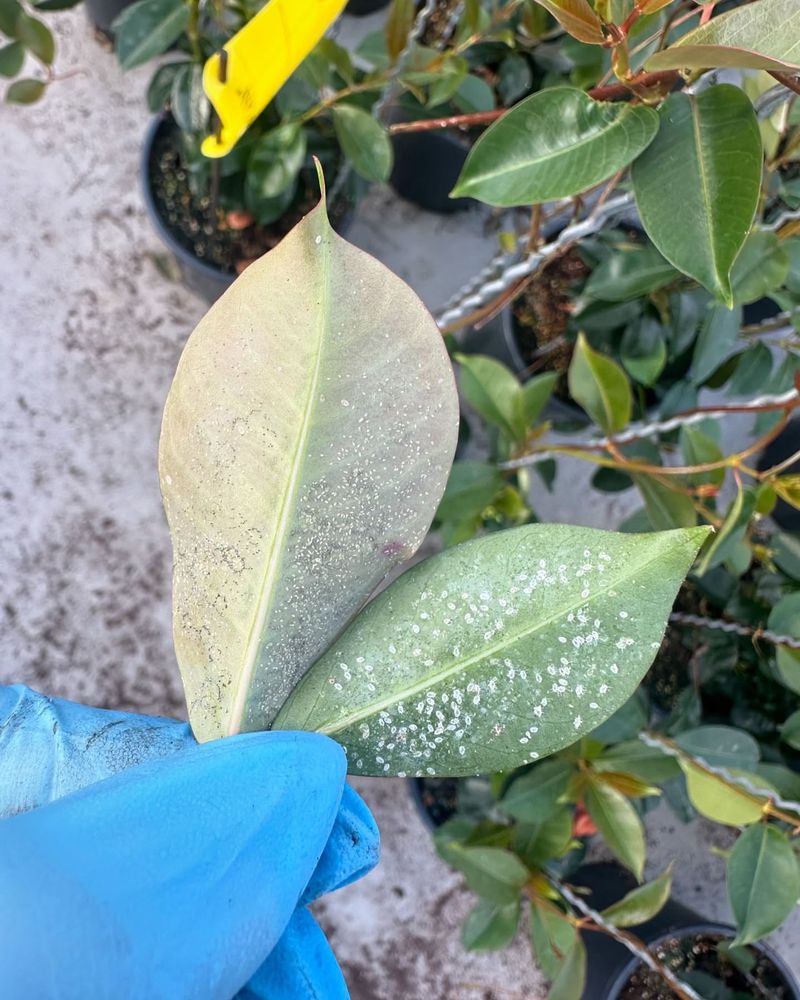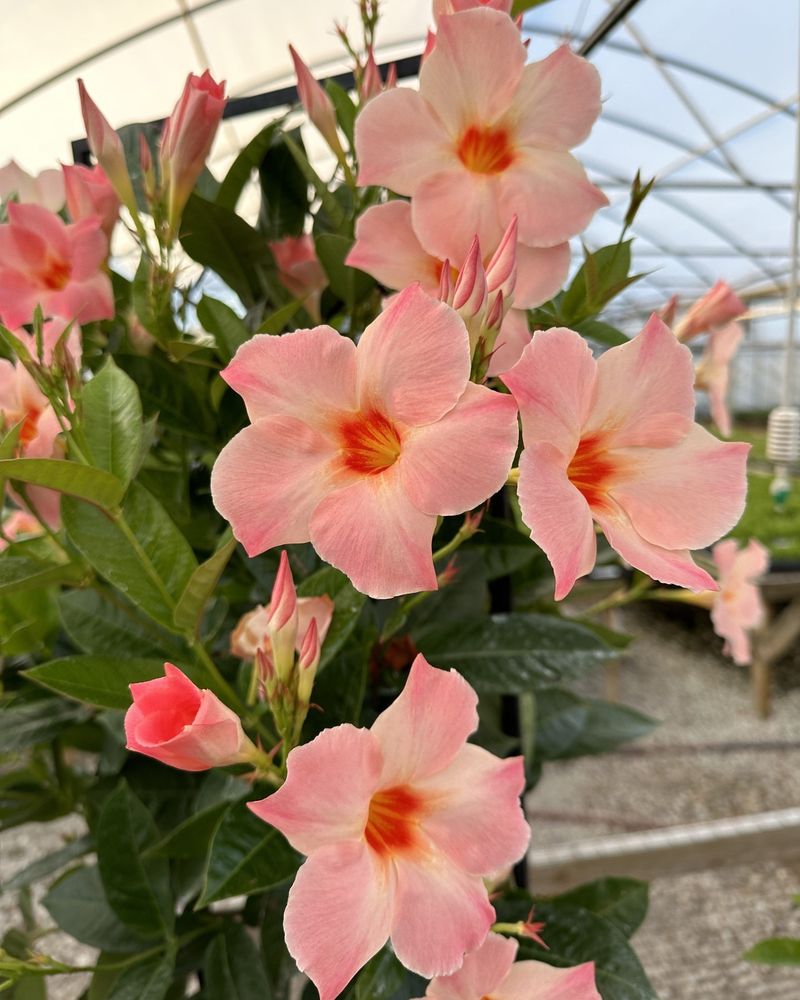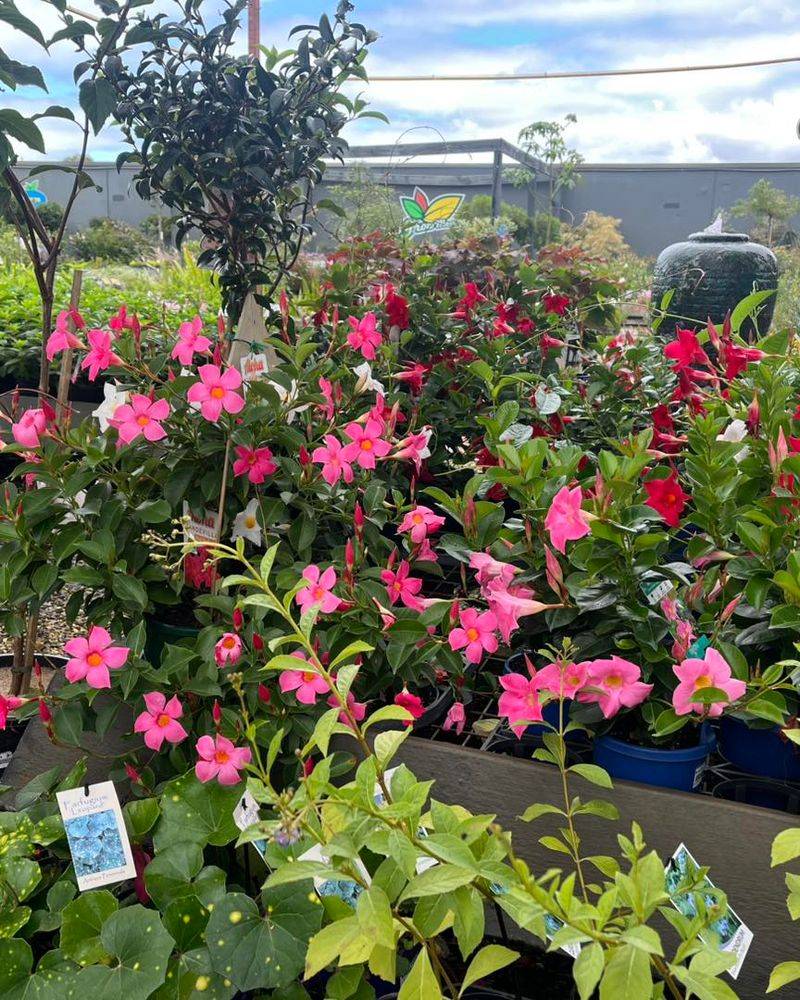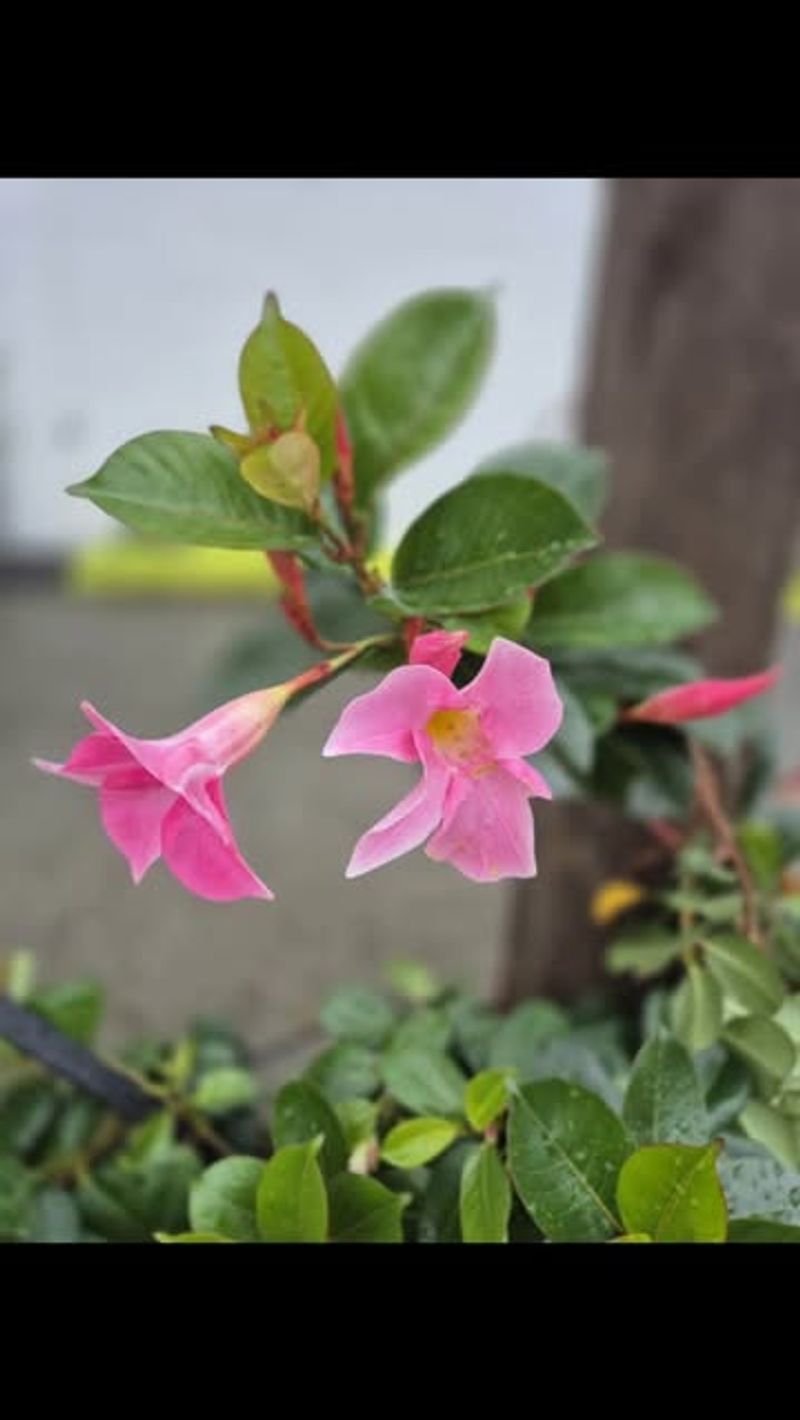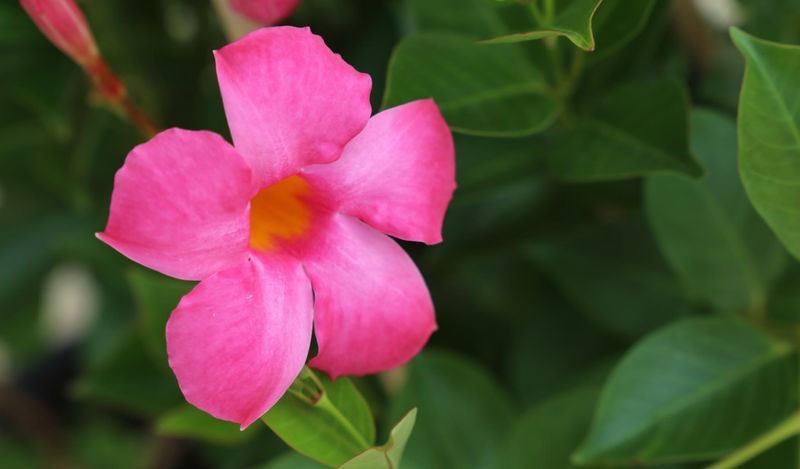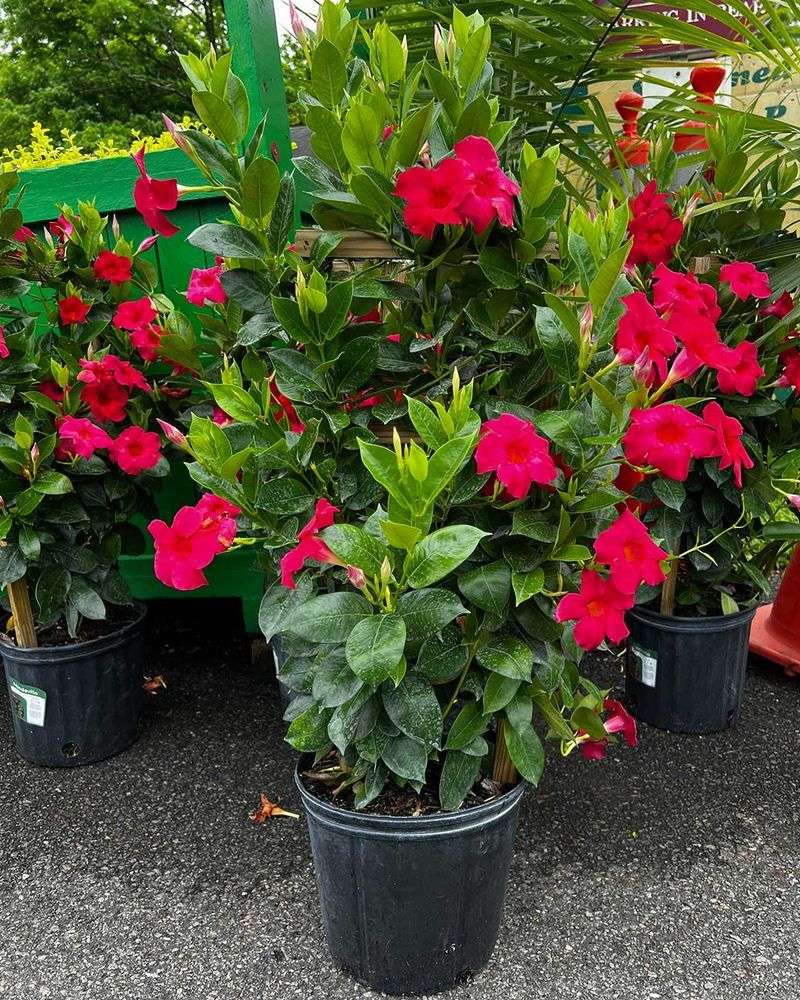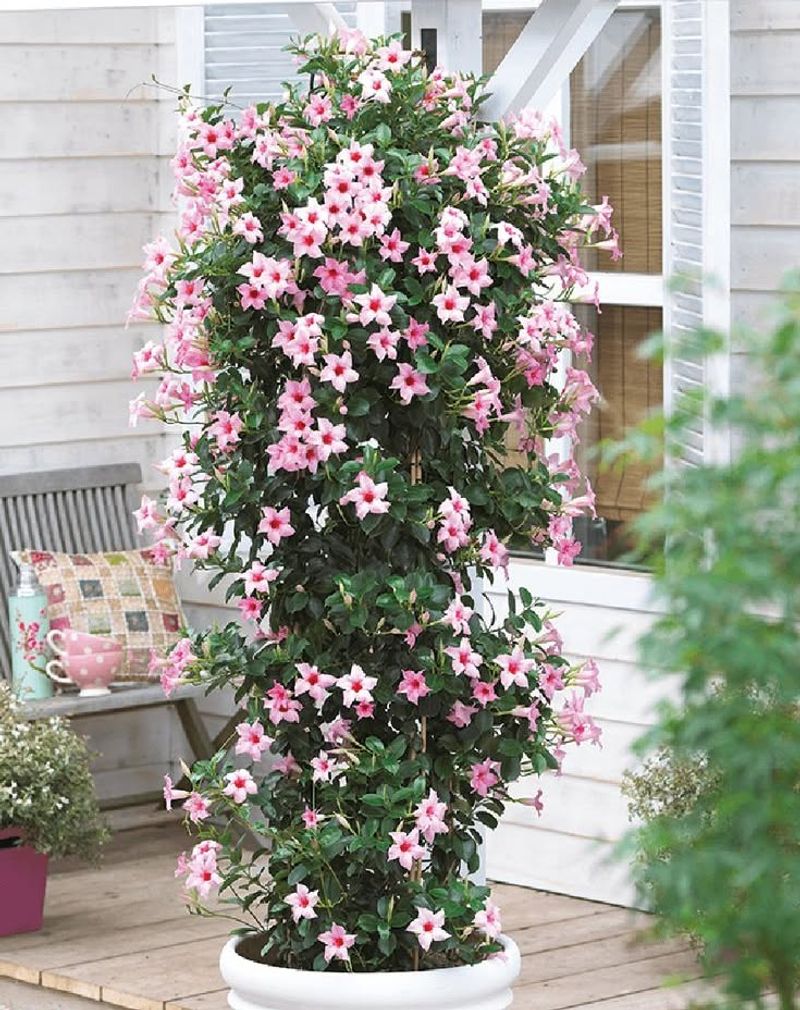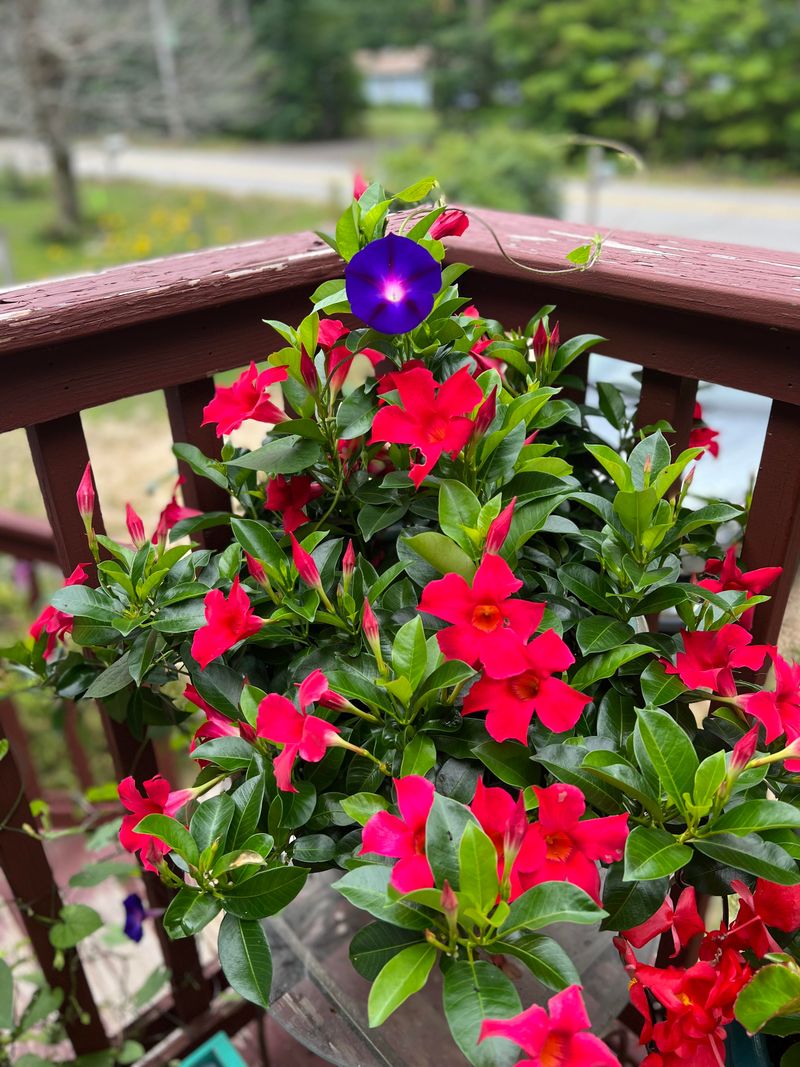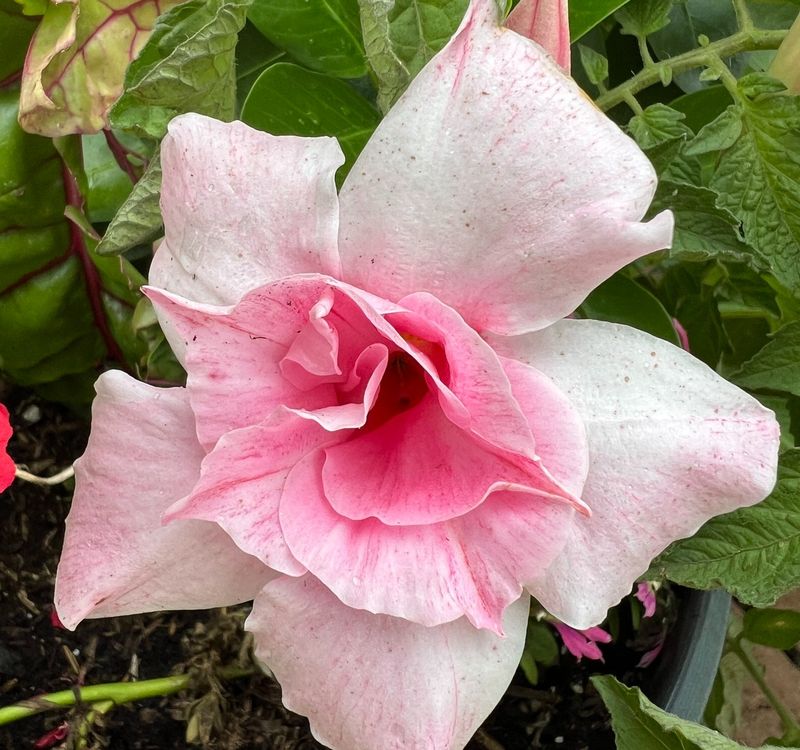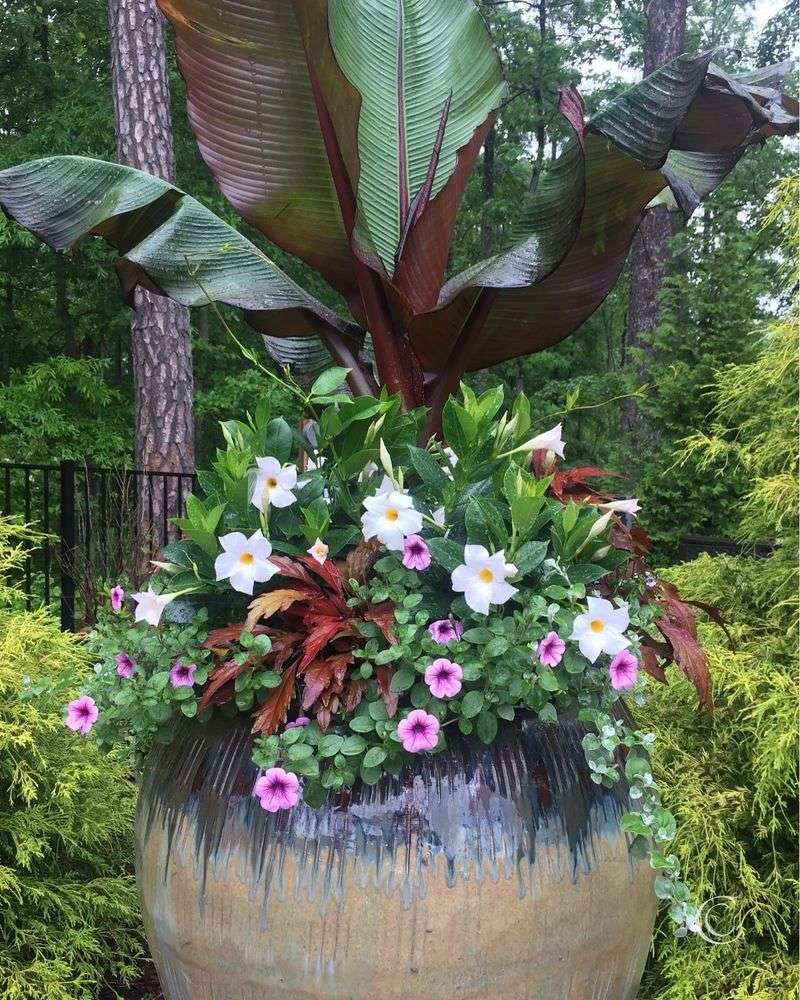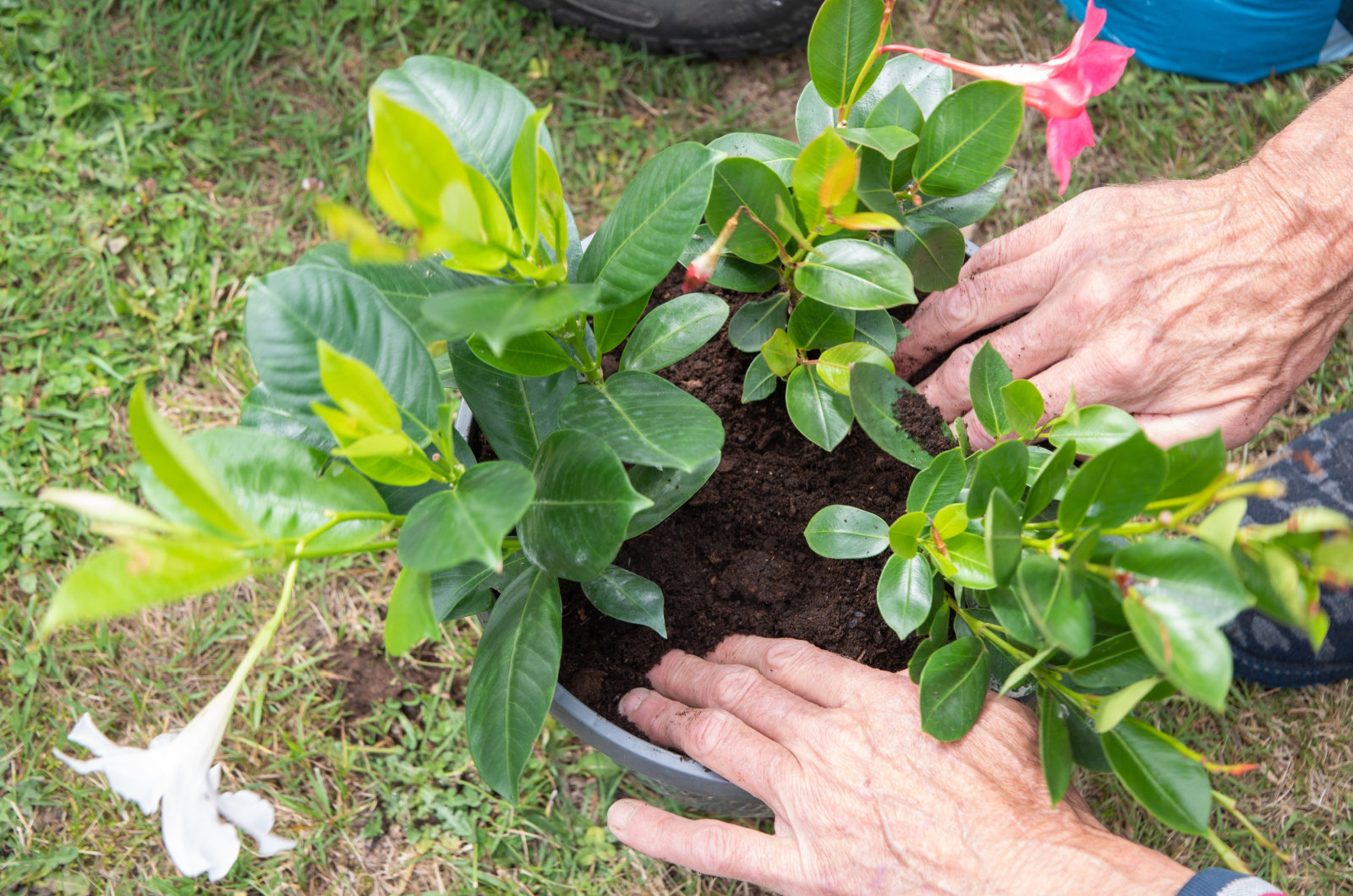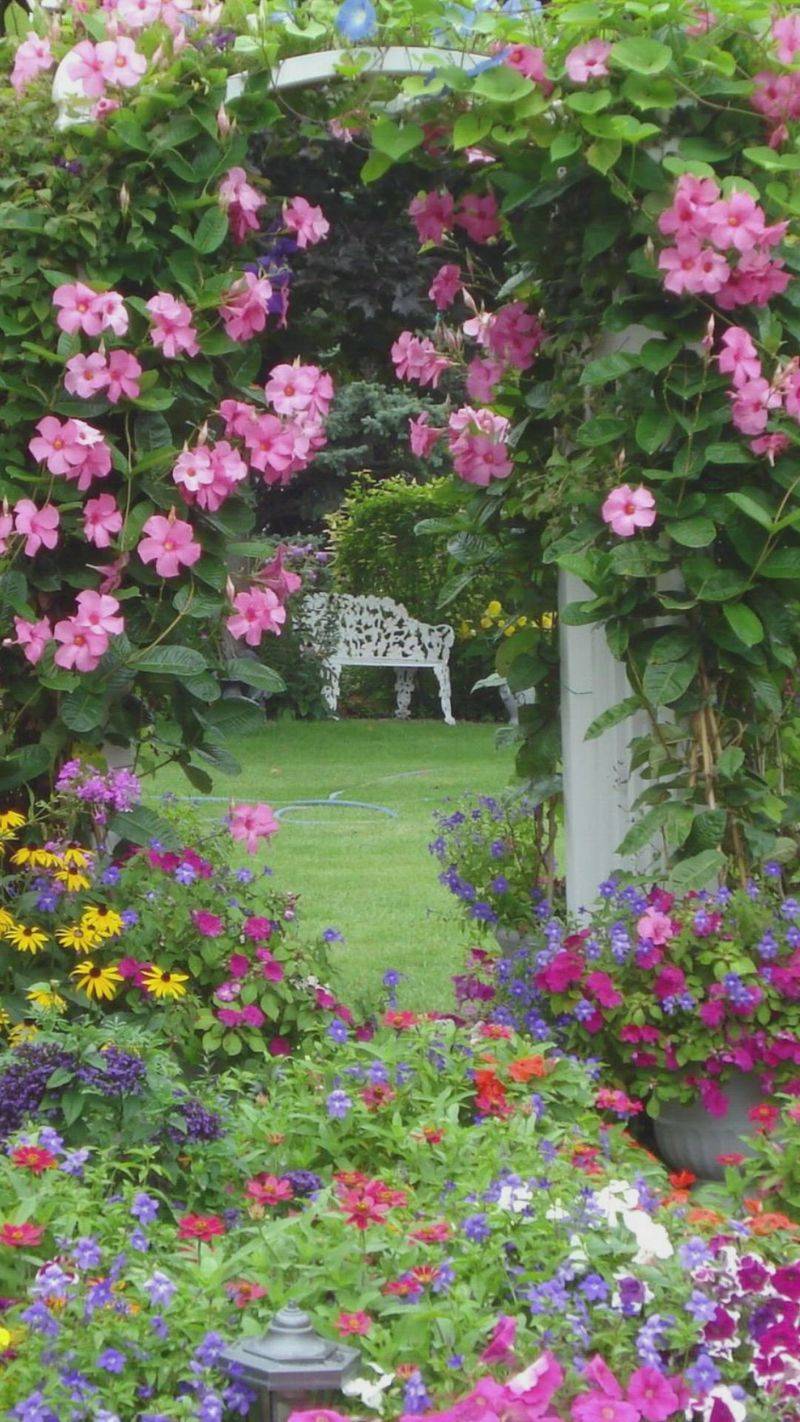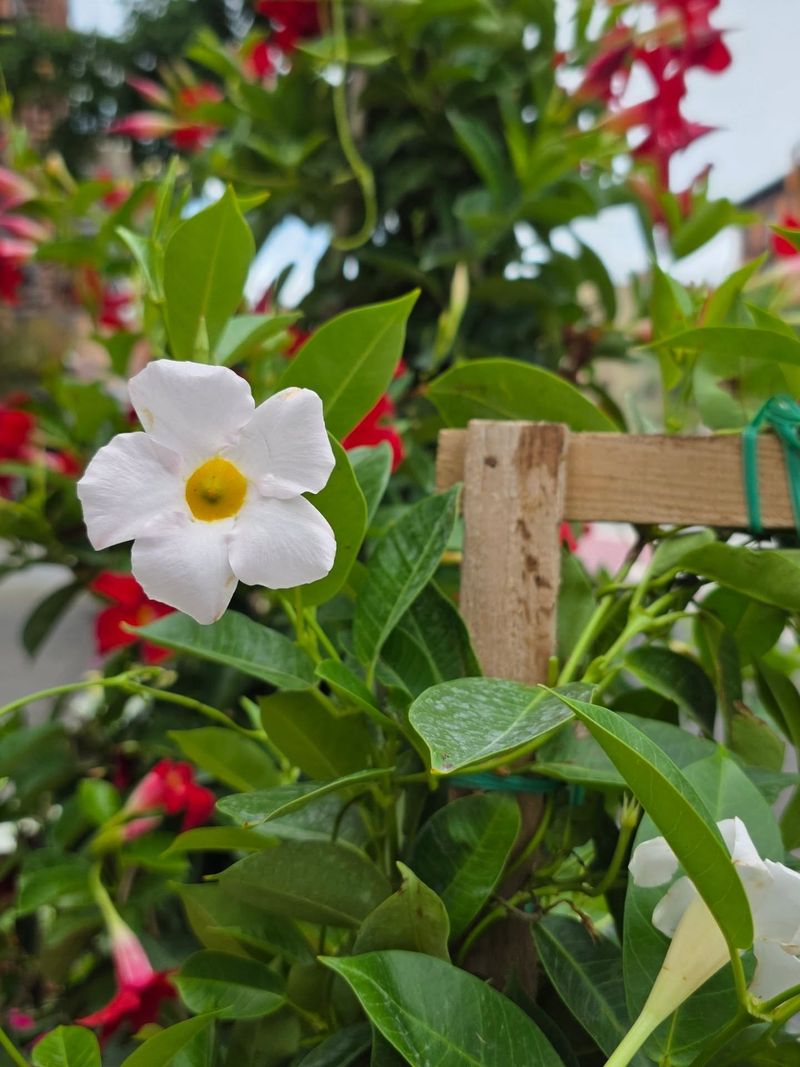With its lush vines and bold, tropical blooms, mandevilla is born to stand out—but only if you treat it right. From mastering sunlight and soil to unlocking the secrets of nonstop flowering, these 19 expert tips will help your mandevilla thrive, climb, and turn heads.
No more droopy stems or missed blooms—just a stunning, showstopping plant that steals the spotlight in any garden.
1. Choose the Perfect Location
Mandevillas crave sunshine but appreciate some afternoon shade in hot climates. Position your plant where it receives 6-8 hours of morning sunlight followed by filtered afternoon light.
The right location prevents leaf scorch while encouraging abundant blooming. Remember that these tropical beauties originated in Central and South America, so they thrive in warm, bright conditions that mimic their native habitat.
For container plants, mobility is a bonus—you can adjust their position as seasons change to maximize sun exposure.
2. Support Your Climbing Beauty
Mandevillas are natural climbers that need proper support to showcase their full potential. Install a sturdy trellis, arbor, or decorative obelisk before your plant gets too established.
Unlike some vines that cling independently, mandevillas need gentle guidance. Regularly train new growth by weaving stems through the support or using soft plant ties.
The effort pays off spectacularly—a well-supported mandevilla creates a living wall of color that draws the eye upward, adding vertical interest to your garden space.
3. Master the Watering Balance
Consistent moisture is key for mandevilla success. Water thoroughly when the top inch of soil feels dry to the touch, typically every 3-4 days during growing season.
Avoid both drought stress and waterlogged roots, as either extreme will cause dropped buds and yellowing leaves. During hot spells, you might need to increase watering frequency while reducing it in cooler periods.
A moisture meter can be helpful for beginners who struggle to judge soil dampness accurately. Always water at the base rather than overhead to prevent fungal issues.
4. Feed for Abundant Blooms
Mandevillas are hungry plants that reward regular feeding with spectacular flowering displays. Apply a balanced, water-soluble fertilizer (like 10-10-10) every two weeks during growing season.
For even more impressive blooms, switch to a phosphorus-rich formula (such as 10-20-10) once flower buds begin forming. This encourages the plant to channel energy into flower production rather than just leafy growth.
Reduce feeding in fall and stop completely in winter when growth naturally slows. Resuming your feeding schedule in spring signals your plant that it’s time to burst into action again.
5. Perfect Your Pruning Technique
Strategic pruning transforms a good mandevilla into a garden masterpiece. In early spring, before new growth emerges, cut back about one-third of the previous year’s growth to encourage bushiness and more flowering points.
Don’t shy away from occasional maintenance pruning during the growing season. Snipping off spent flowers (deadheading) and trimming leggy stems redirects the plant’s energy toward new blooms rather than seed production.
Always use clean, sharp pruners to make cuts just above a leaf node at a slight angle, which helps prevent disease entry and promotes healthy new growth.
6. Create the Ideal Soil Mix
Mandevillas flourish in well-draining, slightly acidic soil that mimics their native tropical forest floor. Create the perfect growing medium by combining equal parts quality potting soil, perlite, and peat moss or coconut coir.
This mixture provides the essential balance of moisture retention and drainage that prevents root rot while keeping nutrients available. For container plants, add a handful of compost to the mix for slow-release nutrition.
Refresh container soil annually by replacing the top few inches with fresh mix, giving your mandevilla a nutrient boost without disturbing established roots.
7. Conquer Common Pests
Stay vigilant against mandevilla’s primary pest enemies: spider mites, whiteflies, and aphids. These tiny invaders multiply quickly in warm, dry conditions and can drain your plant’s vigor before you notice them.
Inspect leaf undersides weekly during growing season, looking for webbing, sticky residue, or clusters of tiny insects. A strong spray of water often dislodges minor infestations before they take hold.
For persistent problems, try insecticidal soap or neem oil applications, focusing on thorough coverage of all plant surfaces. These natural solutions protect beneficial insects while controlling the troublemakers.
8. Maximize Blooming Potential
Mandevillas bloom on new growth, so encouraging fresh stems is the secret to flower abundance. Pinch back growing tips regularly during spring and early summer to promote branching and create more flowering points.
Morning sun exposure is crucial for bud formation—mandevillas that receive only afternoon light often grow lush foliage but fewer flowers. A bloom-boosting fertilizer with higher phosphorus content can trigger additional flowering cycles.
Removing seed pods promptly after flowers fade prevents the plant from wasting energy on seed production and redirects resources toward making more beautiful blooms.
9. Master Container Growing
Container-grown mandevillas offer flexibility and focal-point potential unmatched by in-ground plants. Choose a pot at least 12 inches in diameter with multiple drainage holes to accommodate their vigorous root system.
Terra cotta containers work exceptionally well, as they allow excess moisture to evaporate through their porous walls. Position your potted mandevilla where it becomes a natural eye-catcher—near entryways, on patios, or as a colorful privacy screen.
The container’s mobility also lets you adjust for seasonal changes, moving plants to protected areas during cold snaps or repositioning for optimal sunlight as the seasons shift.
10. Implement Temperature Protection
Mandevillas are tropical treasures that shiver when temperatures drop below 50°F (10°C). In cooler climates, plan ahead for temperature fluctuations that could damage your showstopper.
During unexpected cold snaps, drape lightweight fabric covers over outdoor plants or move containers to protected locations. For extended chilly periods, bring potted specimens indoors near a sunny window.
Hot temperature extremes can be equally stressful—provide afternoon shade and increase watering frequency when thermometers climb above 90°F (32°C) to prevent wilting and flower drop that diminish your display.
11. Perfect Your Propagation Skills
Multiply your mandevilla collection through simple stem cuttings taken in late spring or early summer. Select 4-6 inch sections of semi-mature stems (not too woody, not too soft) with several leaf nodes.
Remove lower leaves, dip the cut end in rooting hormone, and plant in a moistened mix of perlite and peat. Create a mini-greenhouse effect by covering with clear plastic, providing bright indirect light and bottom heat.
Roots typically develop within 3-4 weeks, at which point you can transplant your new mandevillas into individual containers. By fall, these babies will be ready to bloom the following season.
12. Overwintering with Confidence
In zones below USDA 9, successful overwintering transforms your mandevilla from a one-season wonder into a perennial treasure. Before first frost, move potted plants indoors to a bright location that maintains temperatures between 55-60°F (13-16°C).
Reduce watering significantly during winter dormancy, moistening soil only when it becomes completely dry. Resist the urge to fertilize during this rest period—your plant needs this downtime to prepare for next season’s performance.
Expect some leaf drop as the plant adjusts to indoor conditions. This is normal and doesn’t indicate a problem as long as stems remain firm and green.
13. Encourage Vertical Drama
Mandevillas naturally reach for the sky, creating spectacular vertical displays when properly guided. Train your vine to climb in a spiral pattern around posts or columns for a dramatic twisted effect that showcases both flowers and foliage.
For privacy screens or living walls, install horizontal wires or lattice panels and weave multiple plants in a zigzag pattern. This technique creates fuller coverage and prevents the bare-at-the-bottom look that plagues many climbing plants.
Gentle redirection every few days during active growth ensures your design vision becomes reality without stressing the plant.
14. Companion Planting Magic
Strategic companion planting enhances your mandevilla’s beauty while solving common garden challenges. Pair with sweet alyssum or thyme as ground covers to suppress weeds and keep soil cool around the root zone.
Blue-flowering plants like salvia or lobelia create striking color contrasts that make your mandevilla’s pink, red, or white blooms visually pop. Consider adding ornamental grasses nearby for textural contrast and movement that draws attention to your star performer.
Avoid crowding with other vigorous vines that might compete for trellis space and create a tangled mess that hides your mandevilla’s beauty.
15. Color Selection Strategy
Mandevillas come in a stunning range of colors that can be strategically selected to achieve specific garden effects. Classic red varieties create bold focal points that draw the eye, while pink cultivars offer a softer, romantic feel that blends beautifully with cottage gardens.
White-flowering varieties like ‘White Delight’ illuminate shady corners and glow magnificently in evening gardens. For maximum impact, group three containers of the same color for a concentrated color block that commands attention.
Consider your home’s exterior colors when selecting varieties—choosing complementary or harmonious shades creates a cohesive, designed look.
16. Humidity Boosting Techniques
Mandevillas thrive in humid conditions that mimic their tropical origins. In dry climates, create a microclimate by grouping plants together, which naturally increases humidity through transpiration.
Placing containers on trays filled with pebbles and water provides evaporative moisture without waterlogging roots. For indoor overwintering, occasional misting or a small humidifier nearby prevents the dry air issues that cause leaf drop and spider mite problems.
Mulching around plants with organic materials like shredded bark or cocoa hulls helps maintain consistent soil moisture that contributes to ambient humidity levels.
17. Seasonal Care Adjustments
Adapting your care routine to seasonal changes keeps mandevillas performing their best year-round. Spring calls for pruning, repotting if needed, and gradually increasing water and fertilizer as growth accelerates.
Summer maintenance focuses on consistent moisture, regular feeding, and perhaps some shade protection during the hottest days. Fall requires preparation for cooler weather—reduce fertilizer, gradually decrease watering, and plan for winter protection.
Winter care varies dramatically based on your climate—from minimal maintenance in frost-free regions to complete dormancy support in colder areas where plants must come indoors.
18. Creative Display Ideas
Elevate your mandevilla from merely pretty to absolutely stunning with creative display approaches. Train multiple plants up a repurposed ladder leaned against a wall for a vertical garden that combines vintage charm with floral abundance.
For hanging baskets, select bushier varieties like the Mandevilla ‘Sun Parasol Crimson’ that naturally cascade. Their trailing habit creates a waterfall effect of color perfect for porches and balconies.
Unexpected containers like colorful rain boots, antique watering cans, or even old wheelbarrows become conversation pieces when filled with these tropical beauties.
19. Troubleshooting Yellow Leaves
Yellow leaves on mandevilla plants signal problems that need addressing before they affect flowering. Overwatering is the most common culprit, creating soggy soil conditions that suffocate roots and prevent nutrient uptake.
Nutrient deficiencies also trigger yellowing, particularly lack of nitrogen or iron. A balanced fertilizer with micronutrients often resolves the issue within weeks.
Temperature stress from cold exposure can cause temporary yellowing that improves once conditions warm. Examine patterns in the yellowing—bottom leaves typically indicate watering issues while overall yellowing suggests nutrient or light problems.

